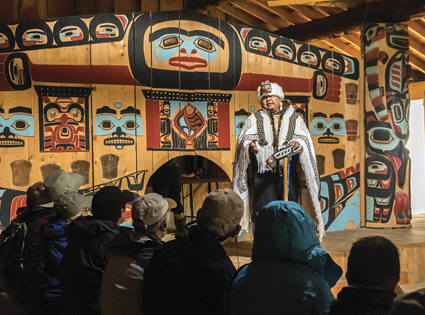Indigenous People are Disproportionately Affected by Crises
“So, they marry the environment to race because it couldn’t be believed alone, the numbers weren’t working. The projections weren’t working. But you know what works? Fear of being called a racist.” This quote comes from an article written by Media Matters for America, and it argues that as a Fox News host stated, the left is tying climate change to racism to suggest that climate change is real because there isn’t actual evidence to support the validity of climate change. I wish that this argument had validity.
Unfortunately, according to the National Oceanic and Atmospheric Administration, since 2010 we have experienced the warmest years on record. The Centers for Disease Control and Prevention found that in Alaska specifically, this will cause an increase in temperature-related death and illness, air pollution, extreme weather events, vector-borne disease, and water-related illness. Climate change is occurring and it’s causing crises. How is this crisis tied to race? Well, as is the case in many issues tied to race, someone’s immediate reaction to another’s race isn’t the issue that must be addressed. The problem is that, historically speaking, institutions have caused harm to one group. So, when disasters occur that group has a harder time coping with them. In this case, indigenous groups have been systematically oppressed, leaving them with limited infrastructure and resources, which makes it more challenging for them to cope with the effects of climate change. Indigenous oppression is rooted in the founding of reservations. Reservations were established in the 17th and 18th centuries through a variety of acts such as the Indian Removal Act of 1830 and the Indian Appropriations Act of 1851. These forced indigenous people to places that lacked resources and took them out of sight of white colonizers. The brutality towards these communities has shifted. However, 68% of indigenous peoples still primarily exist on or around reservations, and 54% of them live out of sight in rural areas. This has occurred in part to give indigenous people autonomy over the reservations and what occurs on them. While that autonomy can have positive elements, the challenges that come with living on reservations and in rural areas are many. According to the Rural Health Information Hub, those who live on reservations are more likely to lack access to healthcare, health insurance, educational attainment, health literacy, economic opportunities, and public transport. As one can imagine, this may make taking on the challenge of COVID-19 incredibly difficult. Unfortunately, a report in 2022 from the National Center for Health Statistics reflected this reality, as it found that the life expectancy of those who are indigenous went from 71.8 in 2019 to 65.2 by the end of 2021, and the primary cause of this was death because of COVID-19. Another place this trend appears is in the limited internet access that those in rural areas have. In 2020 The Federal Communications Commission (FCC) found that only 60% of the American Indian and Alaskan Natives living in tribal areas had access to broadband internet. This number speaks volumes to the limited access to resources that this group has, especially considering that the global pandemic caused lots of people to work from home, which was something that 97% of Americans living in urban areas could do as they have broadband internet access. One of the ways that indigenous people make their money is by utilizing natural resources for things like hunting, fishing, recreation, tourism, and agriculture. This makes climate change a particularly enormous threat for this group because it will impact these resources. The Environmental Protection Agency has found that, when it comes to Alaska natives in particular, they rely on the environment for economic, nutritional, and cultural aspects of their lives. This isn’t a problem for the future. It’s happening now. According to the US Climate Resilience Toolkit over 30 Alaska Native Villages need or are already in the process of relocating their entire village because of the current damages that climate change is doing to their current communities. So, climate change is occurring, and it is having a large impact on indigenous peoples because this population has been systematically oppressed, which makes it harder for them to cope with the consequences of disasters. This isn’t the first time this has occurred. The COVID-19 pandemic killed more indigenous people than any other race in the US. Indigenous people were poorly positioned to handle this disaster well. This trend suggests that we must act now, otherwise, what occurred during the pandemic may happen with climate change. Indigenous people will be overlooked, and this will cause them to be harmed at a higher rate by climate disasters. |
